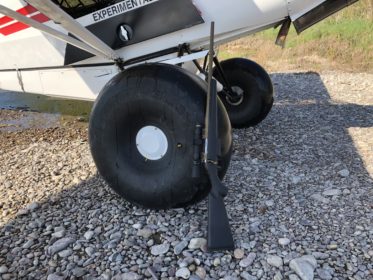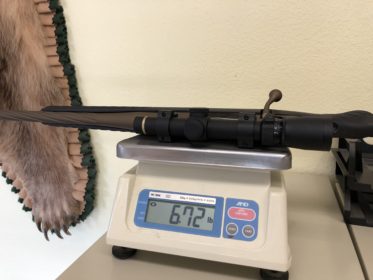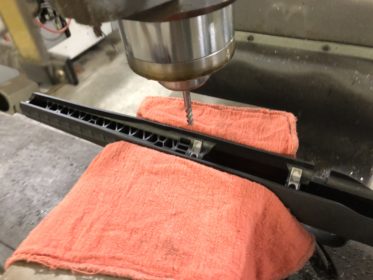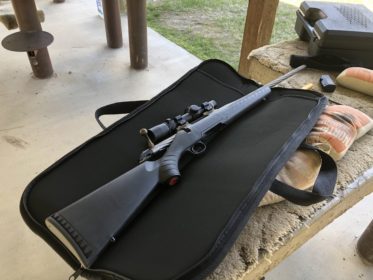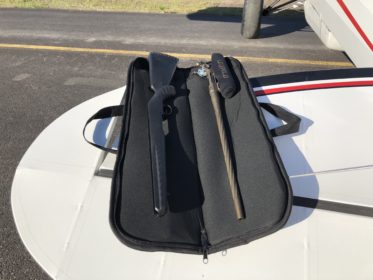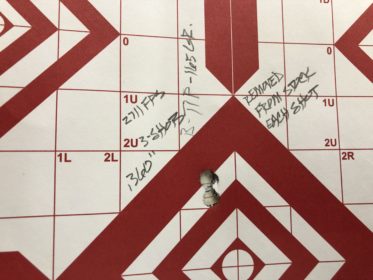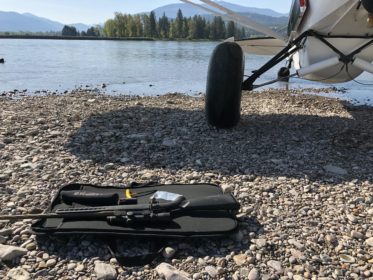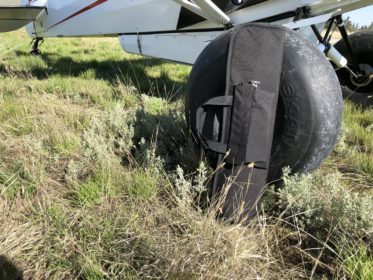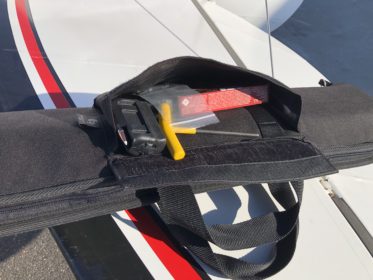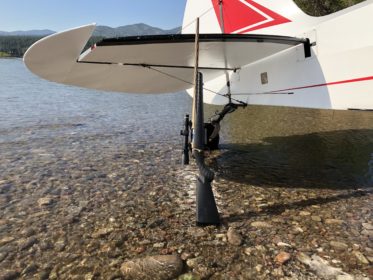Cub-of-a-Gun
Cub-of-a-Gun
By Daniel Lilja
Spring 2019
I’ve long had an admiration for takedown rifles. They look cool, many have unique quick assembly routines and often they’re light weight and compact carry rifles. Over the years I’ve bought a few .22 rimfire takedowns like the Marlin Papoose, AR-7 and the Ruger 10/22. But I never have owned a centerfire takedown.
I have been a pilot since the 1970’s and an airplane owner since the mid-90’s. I have flown many hours over remote parts of North America. I like to pack a gun with me for both a survival point-of-view and also for bear protection. In the states, often it is a big bore handgun and in Canada a hunting rifle. A potential upcoming flight in my experimental Cub to northern Canada spurred my interest in the search for a takedown rifle again. It had to meet a few criteria which included; light weight (all pilots watch the weight of everything they carry), compactness, ease of assembly and be chambered for a reasonably potent common cartridge capable of stopping a mad bear. I’ve killed a couple of Alaska brown bears and a big B&C black bear, so I have an idea of what that takes.
In the end I decided a plain-vanilla .308 Winchester chambered rifle is what I would look for. Ammo for this round is available most everywhere hunting cartridges are sold. The .308 will kill bears, especially with good quality premium bullets.
After looking at many different rifles and stocks, including folding stocks, I made the decision to build this project rifle on a Ruger American. The American model has some neat features that allow it to be used almost like a true-takedown. The stock is made with two aluminum bedding blocks molded into it. The round receiver has matching pockets milled into it and it goes back together in a very repeatable manner. Though not a takedown, it comes close. I wanted as few of parts to reassemble as I could get away with. The American uses a detachable magazine so there is no magazine box and follower and bottom metal to fumble with. The trigger guard is molded into the stock too – one less part. The American is priced right too; I paid $299 for this rifle in .308 Winchester.
As a rifle barrel maker though, we all know the original barrel would be replaced. We wrote a program to duplicate the American sporter profile and fluted it with our spiral 7-12 pattern. I crowned it at 21” because the barreled action with a barrel this length is the same overall length as the stock.
I have come to like Cerakote finishes and had Montana gunsmith Tom Butcher coat it for me with the Burnt Bronze color.
The finished rifle looks nice and the weight is under 7 pounds.
As mentioned, the Ruger American uses two aluminum bedding blocks molded into the stock and ¼”-28 SHCS screws bolt the action into the stock. I found that on this rifle the screw threads rubbed the hole in the block and I opened them with an end mill to keep the screws from absorbing recoil.
I also removed two small steel inserts, that the screws pass through, from the magazine shroud and permanently pinned the shroud to the stock. This keeps the parts count down to two main pieces; the stock and the barreled action, and also allows the two SHCS’s to tighten directly with the aluminum bedding blocks. Accuracy improved following this modification.
Another mod we made to this rifle was spiral fluting the bolt. It removed a little weight and seems to have made bolt operation considerably smoother. (If the above picture is expanded the .125″ diameter roll pin used to keep the shroud in place can be seen.)
Two ¼-28 SHCS along with these two halves bolt together and the rifle is ready to go. And the zero stays consistent; essential for a takedown type rifle.
So how well will it shoot? I worked up a load using Nosler 165 grain AccuBond bullets and I also fired Federal Premium .308 Winchester ammo loaded with the same bullet. With the handloads I settled on 2000MR powder and the velocity from the 21” barrel is 2700+ fps. With the Federal Premium ammo velocity is 2600+ fps. I also experimented with 165 grain Hornady SST’s and accuracy was about the same. My goal was 1 MOA accuracy – taking the rifle apart between shots. I easily beat this with 3-shot groups under an inch at 100 yards – the best going .360” and at 200 yards 1.25” groups were fired. And this is with a 5X scope – more on the scope later. I worked up the load with 165 grain Ballistic Tips. Switching to AccuBonds was seamless. A 2″ high 100 yard zero is a dead-on 200 yard zero with this bullet and velocity range.
I wanted a dependable and lightweight scope that would take some knocking around and keep its zero. I also wanted a lower power range for close, hurried-shots if needed. I did some research and thought the 1×5 Leupold VariX 3 might be a good choice. I asked my good friend Alex Sharif, a very knowledgeable rifle shooter and gear guy, the question and he suggested the same scope without me having tipped my hand. So that confirmed my scope selection and it has proved to be a good one. At 5X I can see .30 caliber bullet holes at 100 yards in good lighting conditions!
One of the keys to putting this kit together and allowing it to be so portable is the case. This case is from Unique Cases in West Virginia and was designed to be used with a takedown shotgun. Their 32” length case is just right for this rifle.
Zipped up and ready to go, it is the same height as the Alaska Bushwheels.
It also has a large pocket that will hold a box of ammo and a couple of magazines as well as the assembly screws and a T-handled 3/16” Allen wrench.
It should be mentioned that the rotary magazine that comes with the Ruger American is the weak link with this rifle system. They are not very robust and look like they might break if dropped on a hard object. Doing some online research, others were saying that the Ruger magazine made for the .450 Bushmaster was a better choice. I bought a couple of these for about $22 each and they are a much sturdier magazine. They are a straight-line feed rather than rotary so the magazine drops down below the stock line but it functions well. Both types hold 3-rounds.
A rough and ready rifle in a lightweight compact package chambered for a common cartridge was the goal and it was met well with this Ruger American chambered in .308 Winchester. So, we’ll see what adventures await this rifle and owner……………..
Updates:
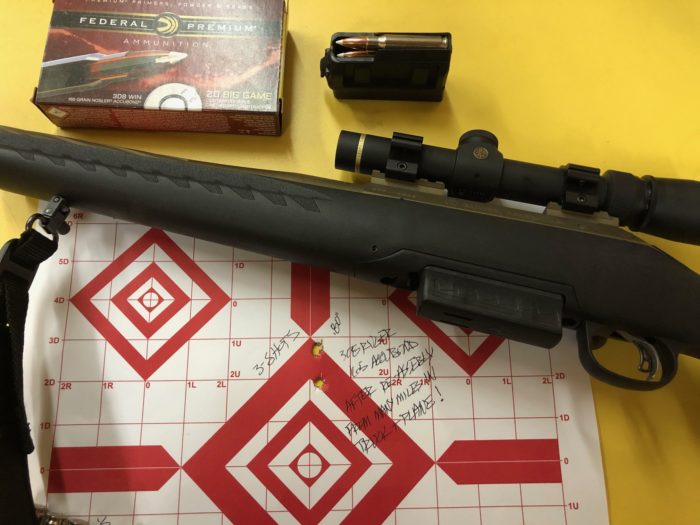
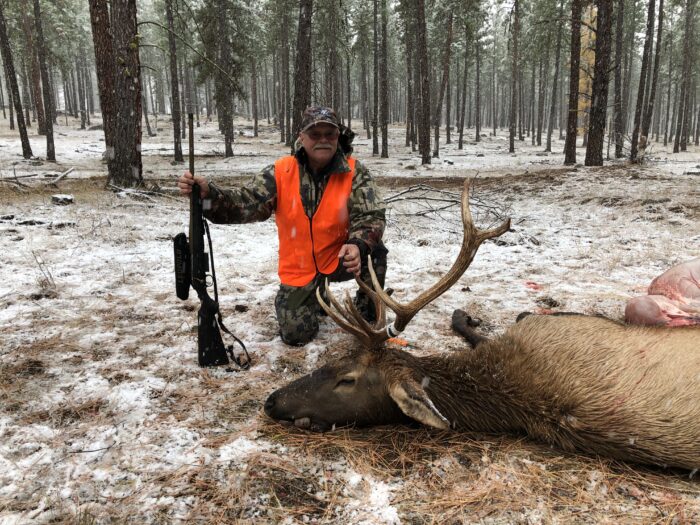
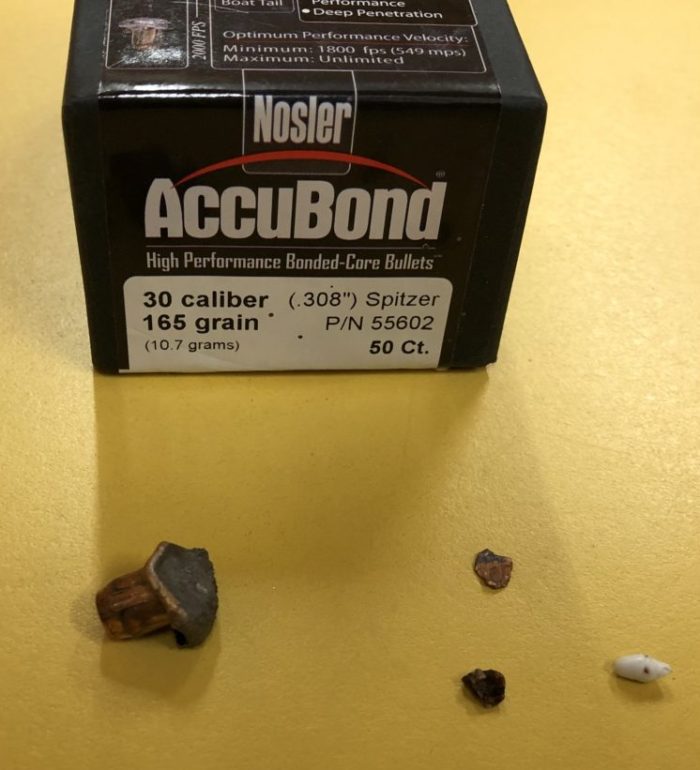
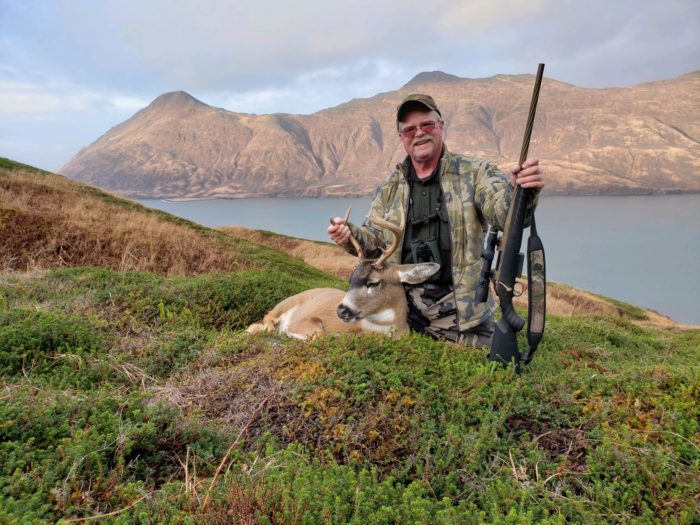
To get to the boat we slept and ate on, we traveled on three commercial flights and a float-equipped Beaver. This rifle is rock-solid and the light overall weight and tough Cerakote finish and plastic stock were appreciated climbing around through the wet, thick salmon berries and alders.
And we did see bears up close……
Update Fall 2023:
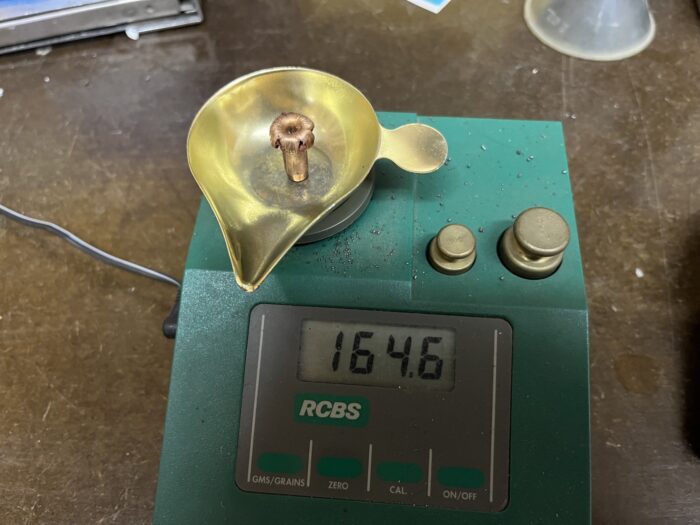
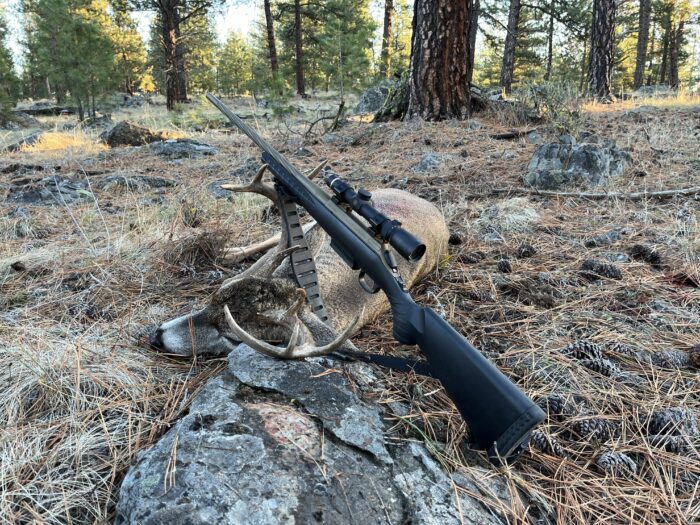
I’ve been impressed with the CX all-copper bullets. 2022 was my first year using copper bullets taking a couple of Sitka Blacktails with the .338 Federal and a 210 gr. Barnes TSX (both bullets were recovered and both weighed a remarkable 210 grains-100% afterwards and had a very large diameter mushroom). In 2022 and 2023 I also shot doe whitetails with an old Winchester M. 94 30-30 using the Hornady 140 gr. Mono Flex bullets. In 2022 I also shot a whitetail buck with a 6.5 Creedmoor and a 120 gr. Hornady CX. In 2023 I shot a 5-point bull elk with a .358 Winchester and a 200 gr. Barnes TTSX. Sally used a 150 gr. CX in her 7mm-08 in 2023 to shoot a whitetail buck and a cow elk. All were clean kills and so far I like the performance of copper bullets.

